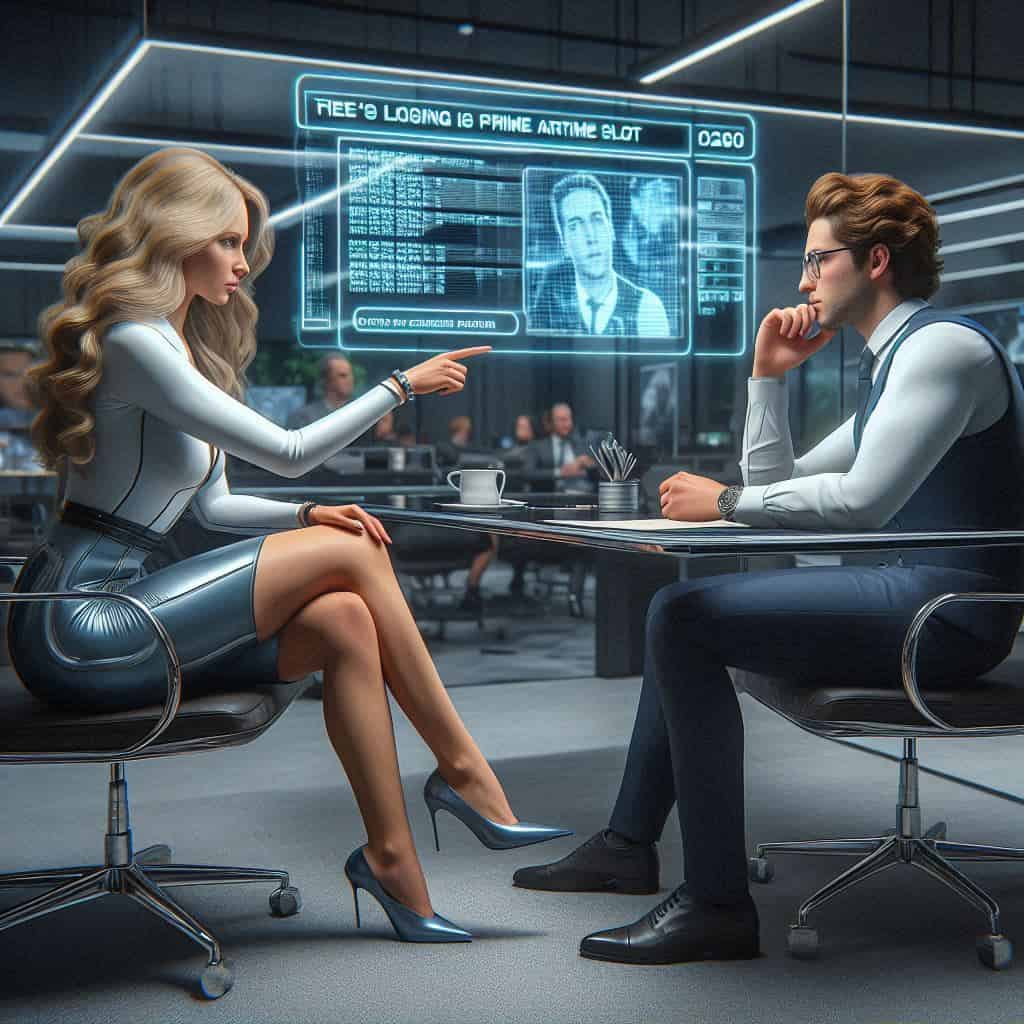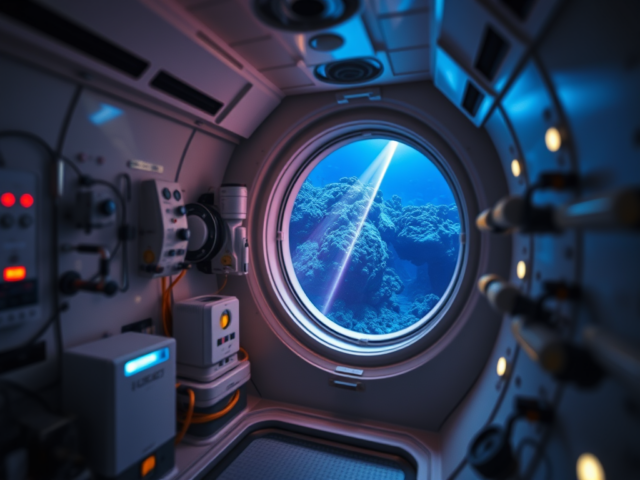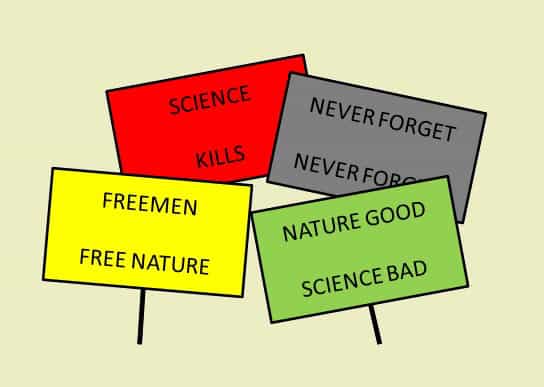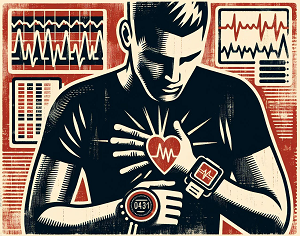MakeMake

43789
LUMINOSITY. 0.95. JETSAM 1.05
INCOMING CHARGED PARTICLES. FIRST 1.03, SECOND 0.99, THIRD 1.01, TRACES UNDER 0.01
LOCAL JETSAM. FOURTH 2.83
REACTION RATE. PINK 824 ICE-VOLATILE. ADEQUATE
INTERNAL STRESS. OUTGAS VIOLET 876. ACCEPTABLE
EXTERNAL STRESS. LIQUID PINK 112.
PROMONTORY. 2.18
TOXIN. 8.30 ALTITUDE. WITHDRAW
PATTERN 43789 TO 43788. CORRELATION: 0.983
43790
LUMINOSITY. 0.98. JETSAM 1.02
INCOMING CHARGED PARTICLES. FIRST 1.02, SECOND 1.00, THIRD 1.01, TRACES UNDER 0.01
LOCAL UNCHARGED PARTICLES. FOURTH 2.38
REACTION RATE. PINK 825 ICE-VOLATILE MASS. ADEQUATE
INTERNAL STRESS. OUTGAS VIOLET 879. ACCEPTABLE
EXTERNAL STRESS. LIQUID PINK 096 OBJECT 17 MOVED AWAY
PROMONTORY. 2.19
TOXIN. 8.27 ALTITUDE. WITHDRAW
ZINGLE. EMISSION FROM INNER BELT 0.075
PATTERN 43790 TO 43789. CORRELATION: 0.947
43791
LUMINOSITY. 0.99. JETSAM 1.08 TAIL OF OBJECT 17
INCOMING CHARGED PARTICLES. FIRST 1.01, SECOND 1.00, THIRD 1.01, TRACES UNDER 0.01
LOCAL UNCHARGED PARTICLES. FOURTH 1.57
REACTION RATE. PINK 825 ICE-VOLATILE MASS. ADEQUATE
INTERNAL STRESS. OUTGAS VIOLET 892. CONCERN
EXTERNAL STRESS. LIQUID PINK 094
PROMONTORY 2.20
TOXIN. 8.25 ALTITUDES. WITHDRAW
NOT ZINGLE. EMISSION FROM INNER BELT 0.387
PATTERN 43791 TO 43790. CORRELATION: 0.963
~~~
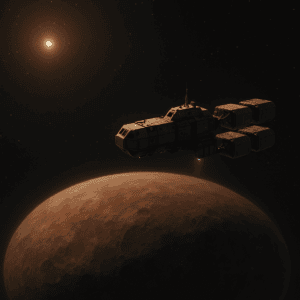
MakeMake beckoned in the Argo’s viewport, the distant Kuiper Belt object promising ice volatiles to the inner system. Its fusion drive, supplemented by ion engines, had achieved orbital insertion only four months after departing Ceres Hub. If exploration proved productive, Argo would deploy four drones to slingshot valuable ores inward.
In the control room of the exploratory ship, Captain Declan Garrett twisted his hands. Striking a mother lode would make him wealthy, independent, free. But the thought only reminded him of RC Garceau’s warning: “Do what I say, and you’ll be assigned to Argo.” Disobey me, and I’ll bury you so deep in the Foundry’s basement, you’ll never see sunlight again.”
Declan pinged the laboratory. “Leah, I just sent the message announcing orbital insertion.”
Leah Petra, the ship’s astrogeologist and now his wife, responded. “I wish you’d given me more time, but I’ve found something puzzling. There’s a twenty-meter hill that, in mid-range megahertz, reveals silicon ions. Such signatures might indicate silicates, and there are several sulfur energy peaks. Unusual—but not impossible.”
“I’ll add the hill to the mining schedule. What else?” Declan asked.
Leah let out a quick, sharp breath. “Put it first. Isn’t that enough? Declan, don’t rush me. I told you this morning—I’m feeling off. Dizzy, sluggish. If my analysis feels less precise than usual, that’s why.”
The control room door whooshed open. Declan turned.
“Sorry,” a smiling, dark-skinned woman said, stepping in. “Leah, should I get Doctor Timlock? I just left him.”
“No, that’s not necessary, Rashmi,” Leah answered, shaking her head. “These spectrographic analyzes can’t wait.” She cut the session.
Everyone in the small volunteer crew would rise to meet the tide and reach for the stars to make their mission succeed.
Rashmi Rao flicked on her ocular recorder. “Arriving at MakeMake is a significant milestone. Captain, please explain our current activities to my in-system viewers.”
Declan nodded. “Leah—Dr. Petra—has identified a hill that holds unexpected ice volatiles. That will be our mining bot, PaulBot Bunyan’s first stop. Although Dr. Petra can use mid-infrared spectroscopy to detect elements from orbit, only surface samples will allow her to pinpoint concentrations and trace elements.”
He gazed into Rashmi’s recorder. “Even if a location isn’t economically viable for mining, our mission statement includes exploration. We’re here to turn this unexplored world into a known entity—to provide future explorers and scientists a firm foundation for their investigations.”
Rashmi walked across the compact control room. “Yes, viewers, it only took me four strides to cross the control room. Despite the immense size of the Argo—especially including the cargo bins—the crew of four, including me, operate in cramped quarters. Fortunately, each of us has private rooms. But outside, the expanse is limitless.”
“Captain, I’m sure the viewers want to hear about the logistics of mining forty-five times farther from the Sun than Earth, where 40 Kelvin—minus 233 Celsius—is practically a heat wave.”
Declan glanced at his screen, scanning his prepared remarks.
“Resource Coordinator Garceau convinced the Board that after two centuries of prioritizing new cities high above flooded shorelines, it was time to take a gamble—that the Argo could deliver scarce resources to the inner systems, so Earth no longer would have to.
“The demand never stops. The communities serving Earth provide exotic resources and precision-manufactured goods—pharmaceuticals, neural fabrics—created under extreme conditions: near vacuum, zero gravity, and catalytic processes requiring electron-volt precision. Our mission aims to fill their input shortages.”
He shifted his glance to the next section.
“For Ceres Hub—the fueling station for hundreds of prospectors, including us—the priority is one hundred thousand tons of water ice volatiles, along with silane for sealing hydroponic tanks. The high demand is for volatiles containing carbon monoxide, dioxide, or methane. They also value any ices with substrata that can be developed into building materials. Ceres Hub made it clear: fill the cargo drones to the brim—they’ll consume every gram on arrival.
“Ganymede Research Center, meanwhile, has to rebuild its neuro-polymer industry, halted after the ejection from Comet C/2398 K3, while their other scientific research continues. They’ve requested helium-laden ices for fusion reactors, along with ancient ice effluents, some of which may contain traces of phosphorus, arsenic, and sulfur. They also want samples of all radioactive ices, even in their depleted state, for further study.”
“And then there’s Mars—with a million inhabitants living in Sagan Bubbles. Their request includes materials for superconducting—if MakeMake has them, we’ll locate, extract, and deliver them down the gravity well to Mars orbit. They’ve also requested methane, ethane, and ammonia ices, for hydroponic improvements and atmospheric replenishment.”
Declan took a breath. “That’s our mission: Extract resources from MakeMake—an icy orb more than seven hundred kilometers across—thirteen thousand kilometers below us. Currently, Dr. Leah Petra’s goal is cryo-magma. If her spectrograms come up empty, I’ll shift our geostationary orbit to make more of the surface available to her instruments. This background work is essential for setting up PaulBot Bunyan’s schedule.”
Rashmi Rao coughed, faint but deliberate, recapturing his notice. “Excuse me, Captain—explain to our audience what you mean by the bot’s schedule?”
Declan chuckled. “Thanks for asking—master of so many titles.” He took a quick sip of throat tonic, clearing his voice.
“How many of your viewers know that your host isn’t just our communications officer, but also a skilled linguist, a renowned philosopher, and an expert on Earth’s societies? It’s humbling to talk with her, viewers, I have to admit—but then she undoes that humility with her gracious demeanor.”
“Stop,” Rashmi interrupted, smiling. “The viewers want to hear about PaulBot Bunyan, not me.”
“Oops … sorry,” Declan muttered, regaining his footing.
“Well, audience—out here, frigid conditions dominate. All machinery on MakeMake’s surface operates in four-hour shifts before undergoing lubricant drainage, purification, and refilling to ensure sustained function. PaulBot Bunyan’s schedule accounts for this—everything on the ground runs under strict operational windows to prevent mechanical freeze-out.”
As Declan continued the technical breakdown, his formulaic descriptions began to drag. By the time he finished, everyone was relieved—including him.
~
Several hours after the vidcast, Declan entered the comm room.
Rashmi Rao lay on the couch in the break area, her eyes closed.
“Wake up,” Declan said. “I need you, Rashmi. Earth will be responding soon, so I have to get PaulBot ready to go. That means hours in an EVA suit, near the cargo sites, switching the bot’s neural network cards from monitoring to mining. Ping me the second RC Garceau responds.”
Rashmi wiped her eyes and sat up, giving him a tired look. “Relax—you have time. Visit Leah—good karma always pays back.”
Declan raised his hand, palm up, cutting her off. “I’ll rest when the job’s done. The earlier I get ahead of events, the more time I have to react to them.”
Rashmi gave a restrained, rueful laugh. “American men never relax until they’re in the grave. I should have stayed back in New Kolkata, helping the millions settling in the Himalayan foothills—so different from their coastal homes. They listened to my advice and were better off for it. Here? I might as well be a chair in a house where no one sits.”
Declan approached the display screen. “This is what I have to prepare for.” He pulled up a contrast-enhanced outside view of the world below. Otherwise, sunlight, dimmed by Newton’s inverse square law, left its surface as dark as his childhood memory of a locked closet with a small window. “The stars are outstanding—but MakeMake’s surface is just… dark without help.”
Rashmi peered at the screen. “That’s why I haven’t included it in a vid yet, but this one might work.” She leaned forward, pointing. “Wait—what’s that area? It’s brighter.”
“Maybe an error in the enhancement algorithm.” Declan tapped to contact the lab. “Leah, some places on the surface are brighter than others. Is that a computer glitch or a real phenomenon?”
Leah looked up from the spectrograph she had been examining. “Honestly, Declan? Don’t I needed to finish this scan before you can reset the sampling instructions.”
“True,” he admitted, “but we must investigate mysteries. Wouldn’t you agree?”
Leah sighed. “Share it with me.”
A pause, then a short exhale. “No mystery—it’s methane ice volatiles reflecting what little light there is. Its high albedo makes it stand out from the areas of lower reflection.”
Declan pulled his shoulders back, grinning. “So—I’ve pinpointed our first discovery.”
Rashmi shot him a look. “No. Leah made the discovery, and my sighting led to it.”
Declan chuckled, shaking his head at himself. “I see I’m not needed here. Anyway—I’m heading out to work on the bot.”
~
Captain Declan Garrett exchanged three of PaulBot’s four neural network modules. The bot’s new functions enabled it to directly control the fusion melt, operate the electromagnetic loading tools, and, once all shifts were complete, launch and pilot the shuttle back to Argo.
The first priority was collecting ten-kilogram samples from sites of geological interest to assist Leah in completing her chemical survey:
- Ice volatiles at the base of the silicon hill, less than a hundred meters below the surface.
- Ammonia cryo-sludge, deeper but not far from the silicon hill.
- A frozen, multi-colored flume, likely primordial material rich in radioactive isotopes, located fifty kilometers away, though its depth remained unclear.
- Icy crust from a perpetually shadowed indentation, sixteen kilometers to the east.
- Just eight kilometers from the bot’s base, the final site promised water ice volatiles.
~
By the next time the crew gathered in the break room to discuss their progress, a priority message from Earth arrived.
Leah Petra paused mid-sentence, halting her analysis of the sulfur concentration in the multi-colored sample as the comm alert cut through.
Captain Declan paid more attention to Leah’s waning stamina than to her analytical discussion.
Doctor Timlock, ever pragmatic and now focused on med checks for the mission’s intense phase, offered his standard comment: “If we can use it, extract it.”
Rashmi shut off her vid recorder, obeying the standing order that Coordinator messages were private unless explicitly authorized for release.
The message began.
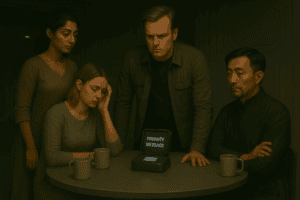
“Greetings, Argo,” Resource Coordinator Garceau said, his familiar tone precise and commanding. “All Earth celebrates your arrival—finally, a mission dedicated to providing off-worlders the resources we can no longer supply, burdened as we are by transplanting twenty million citizens to new cities each year.
“Your priority is Ganymede’s cargo—gather and deliver it first before addressing shipments to Ceres or Mars.
“Captain Garrett, I know this is a change from our last exchange, but events here demand it. The researchers have developed a five-layer neural polymer in the Center’s lab—a breakthrough that will increase bot intellectual productivity. We must get this out of the lab and into production. We may eliminate starvation in coastal areas with hydrobot harvesting improvements.
“In your next status report, I want a timetable for Ganymede’s early cargo shipment. I regret that we cannot discuss this in real time, but I know you and your crew are dedicated to my goals. Take care, and may God watch over you.”
The message ended, and an uneasy silence hung in the room.
Declan leaned toward Leah, squeezing her hand, more for his own reassurance than hers. “The prospectors?”
Leah met his gaze, her exhaustion apparent but her voice steady. “I know it’s not what you wanted, Declan, but Ceres Hub is scrappy. They’ll find a way to get by.”
Declan gave a measured nod, tension visible in his clenched jaw. “Maybe they will,” he said, his voice low. “But that doesn’t mean we should be starving them of support.” He exhaled and straightened, as though physically shaking off the weight of the Coordinator’s directives. “You know, the deal I made with Garceau to be here, Leah. I don’t have a choice—but I don’t have to like it either.”
Coming next month: Captain Declan and Astrogeologist Leah receive news. Facilitator Rashmi Rao and Physician Timlock argue.


